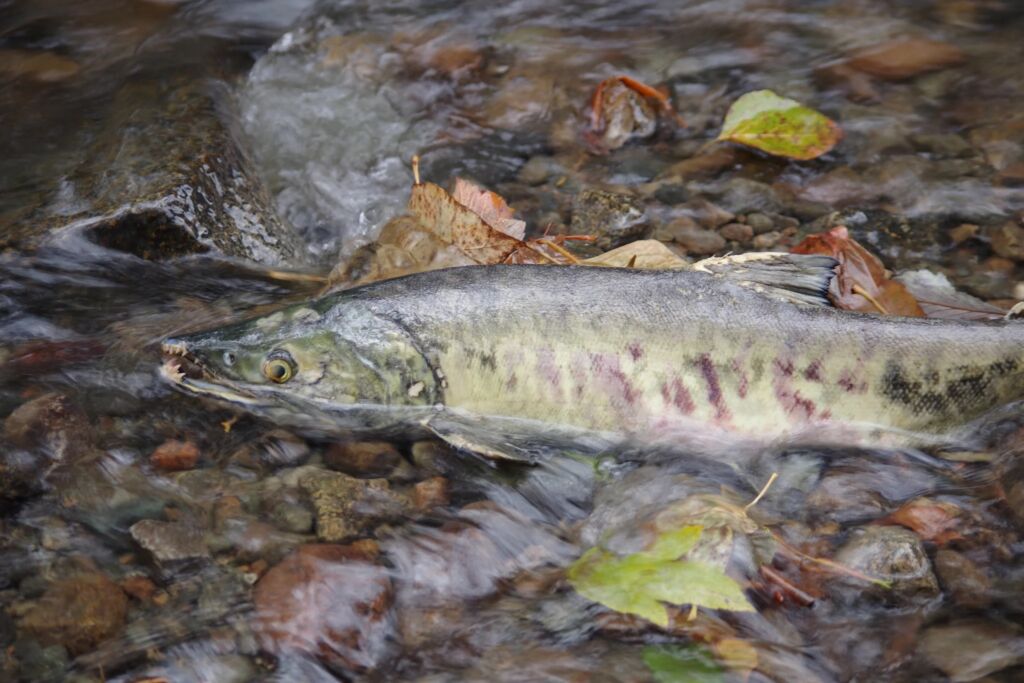Val's Book Reviews

Wildlife Congregations: A Priest’s Year of Gaggles, Colonies and Murders by the Salish Sea
by Laurel Dykstra
Surrey: Hancock House Publishers, 2024
$24.95 / 9780888397539

[Editor’s Note: Laurel Dykstra is non-binary and uses they/them/their pronouns. This is accounted for in the following review.]

Over one particular year, author Laurel Dykstra, a naturalist priest, used their talent with words to produce a memorable story of spiritual encounters with wildlife gatherings of various creatures in the lower Fraser watershed.
Dykstra’s unique observations and their conversationalist writing style allow their readers to learn a wide variety of facts about many species using meticulous research and their own brand of humour. From spawning salmon, nesting herons, and bats, to crows, sea lions, and geese, they take their readers on an exceptional wildlife tour. Throughout it all, Dykstra also manages to combine a history of saints and clerics, natural history, and their own deep spiritual connection to nature to ensure that naturalists everywhere strive to save many species from extinction.

Dykstra’s preface begins on the first day of January by the bank of the Chilliwack River where they join a potlatch ceremony honoring the relationship between “Salmon, Cedar and Water and that those of us who gathered did so in order to humbly dedicate ourselves to caring for these three entities as our relatives.” Above all, the author claims “Humility is key . . . and that the water, the fish and the trees are the ones that sustain life.”
Before they begin their monthly pilgrimage of wildlife gatherings over that year, Dykstra refers to the Terms of Venery in their introductory chapter. The Aberdeen Bestiary, now available online, is a 12th century catalogue of animal species that was once owned by King Henry VIII. The author offers many intriguing excerpts including the fact that “some say that weasels conceive through the ear and give birth through the mouth; others say, on the contrary, that they conceive through the mouth and give birth through the ear . . .”

In February, they describe a visit to Powell River with their daughter to experience a “Haul of Sea Lions” and witness “the unexpected descent of 1,000 California Sea Lions on the sunshine coast.” This chapter delivers a fascinating picture of honking, smelly, creatures who lead an adventurous life, and the reader is again provided with a plethora of facts to digest.
During the month of March, the author writes of their encounters with crows in the chapter headed “A Murder of Crows.” They state, “I love many things about crows, their shiny feathers, the wealth of detail and subtlety in the color black, and their seeming sameness but the remarkable difference between the individuals.”
Dykstra’s experience with a “Siege of Herons” overlapped into three months—March, April, and May. The herons had arrived in Vancouver in mid-March so the author “charged their camera battery, jumped on a bus and headed for Stanley Park.” They visited the heronry there a month later and then in May and each time experienced different stages of development until the chicks hatched in mid-May. On each visit the scene had changed.
“My visits to the heronry lasted well into May,” writes Dykstra, and this had sidetracked her original intention of experiencing a different “gathering” every month of the year. But animals don’t work that way and they worried there might be nothing happening in the way of gatherings until the Fall. For that reason, they then devote their next summer chapters to mammals, insects, amphibians, and fish.
They begin with a chapter on bats headed “A Colony of Bats.” In this chapter, the author describes a visit to Burrvilla, a Queen Anne revival heritage home that once belonged to a local farming family, the Burrs, whose great nephew was the famous Raymond Burr of Perry Mason fame. It is now a well-known spot to witness a gathering of bats.

Readers are then taken on adventures with toads, moths, and salmon through the summer and into October. Who knew that such creatures could offer up such a plethora of information for the uninformed? Dykstra’s next chapter, headed a “A Gaggle of Geese,” covers their fascination with geese. At the end of the chapter, they note: “As the geese moved away, they resolved again into distinguishable individual forms and voices. The entire flock assembled in the flooded field to the east.” It was an incredible sight.

Chapter 9 – “A Convocation of Eagles” – describes the bald eagle, a majestic bird and one of the best-known birds in North America, that was “rare in North America fifty years ago. They had been trapped, poisoned as pests, and shot by fishers, farmers, and trophy hunters.” Thankfully this has changed and slowly bald eagles, like crows, have adapted to urban development. There are now many active nests in the city and across the Fraser Valley.

Chapter 10 covers “A Raft of Ducks’ and leads readers into an additional chapter (or perhaps an epilogue) titled “A Shoal of Anchovies.” This is a particularly beautiful chapter to end the book and the year. “While these were not herring, it felt like the waters held an entire moon-full of tiny fish,” Dykstra writes. “I then headed home, ready to ring in the new year with my family and return to the Salmon Ceremony on the Chilliwack River in the morning.” Thus, the story comes full circle during the many wonders of nature.
There were many things I enjoyed about this book, but I, in particular, found that the writing flows with ease, and the sources and resources at the end of each chapter were extremely helpful to the layman as indeed was the glossary at the end. The inclusion of quotes at the beginning of each chapter was also appealing. At times, Dykstra seemed obsessed with the sex life and reproduction of these creatures but, after all, that is surely what creation is all about. Certainly, nature enthusiasts and those who enjoy the spiritual connection to all wildlife will relish this very informative and educational book.
Link to Original Review
“The Ormsby Review, named for pioneering historian and UBC professor Margaret Ormsby, is a remarkable and comprehensive online review of more British Columbia books than you ever imagined existing — the west coast publishing market is lively. It covers fiction, poetry, politics, memoir and much else, as well as a lot of local and west coast history.” – Christopher Moore, September 14, 2020.
Editor and Publisher: Richard Mackie
Mission Statement: The British Columbia Review, formerly The Ormsby Review, is a lively and inclusive Vancouver-based online journal devoted to the literature, arts, culture, and society of British Columbia. Our mandate is to review books by BC-based writers wherever they choose to publish them. We review books from the member publishers of the ABPBC (Association of Book Publishers of BC), but we also review books that are privately printed, self-published, or published by BC writers at publishing houses elsewhere in Canada or abroad. When possible, we also find BC reviewers. Our accessible and authoritative reviews and essays, written by experts in their fields, are packaged as illustrated magazine articles.
The British Columbia Review works with writers, publishers, and literary professionals across Canada to promote books published by BC writers or about British Columbia in all its diversity. We include books by all authors, regardless of race, age, ability, sexual orientation, gender or gender identity, ethnicity, religion, political belief, marital or family status, and/or status as Indigenous, Métis, or Inuit.
The editorial offices of The British Columbia Review are located near Commercial Drive in East Vancouver, in the traditional, unceded, and sometimes overlapping territories of the Musqueam, Squamish, and Tsleil-Wauuth peoples. Indigenous British Columbia, the land on which we live and create, extends over a large area comprising three culture areas, eight language families, and 32 distinct languages. We endeavour to review all books by and about Indigenous BC. Those reviews can be accessed directly here.
